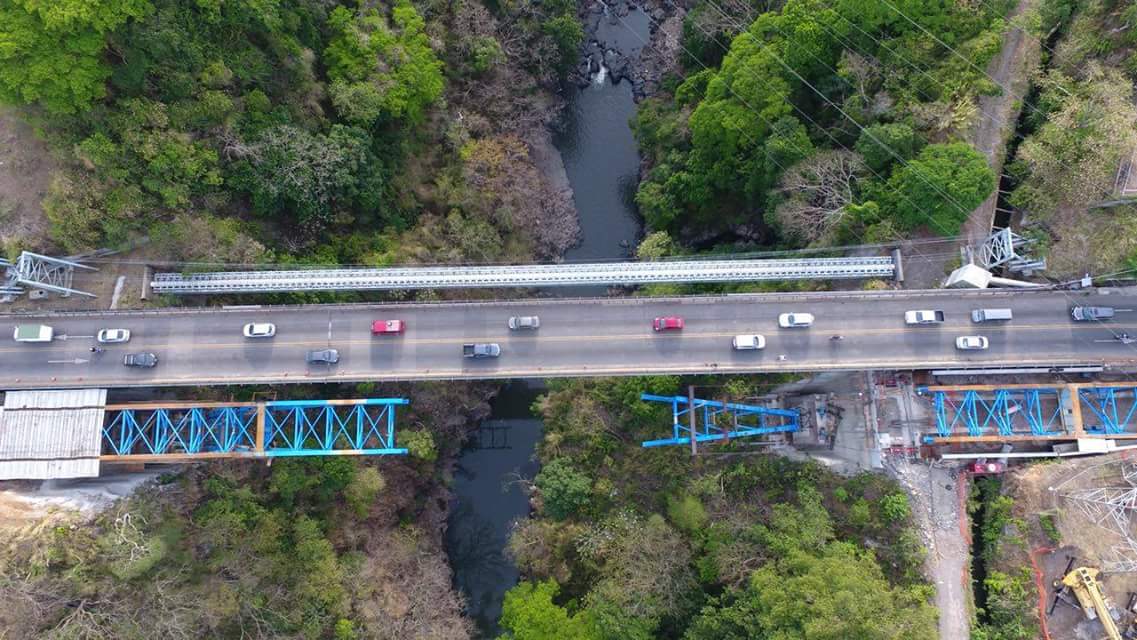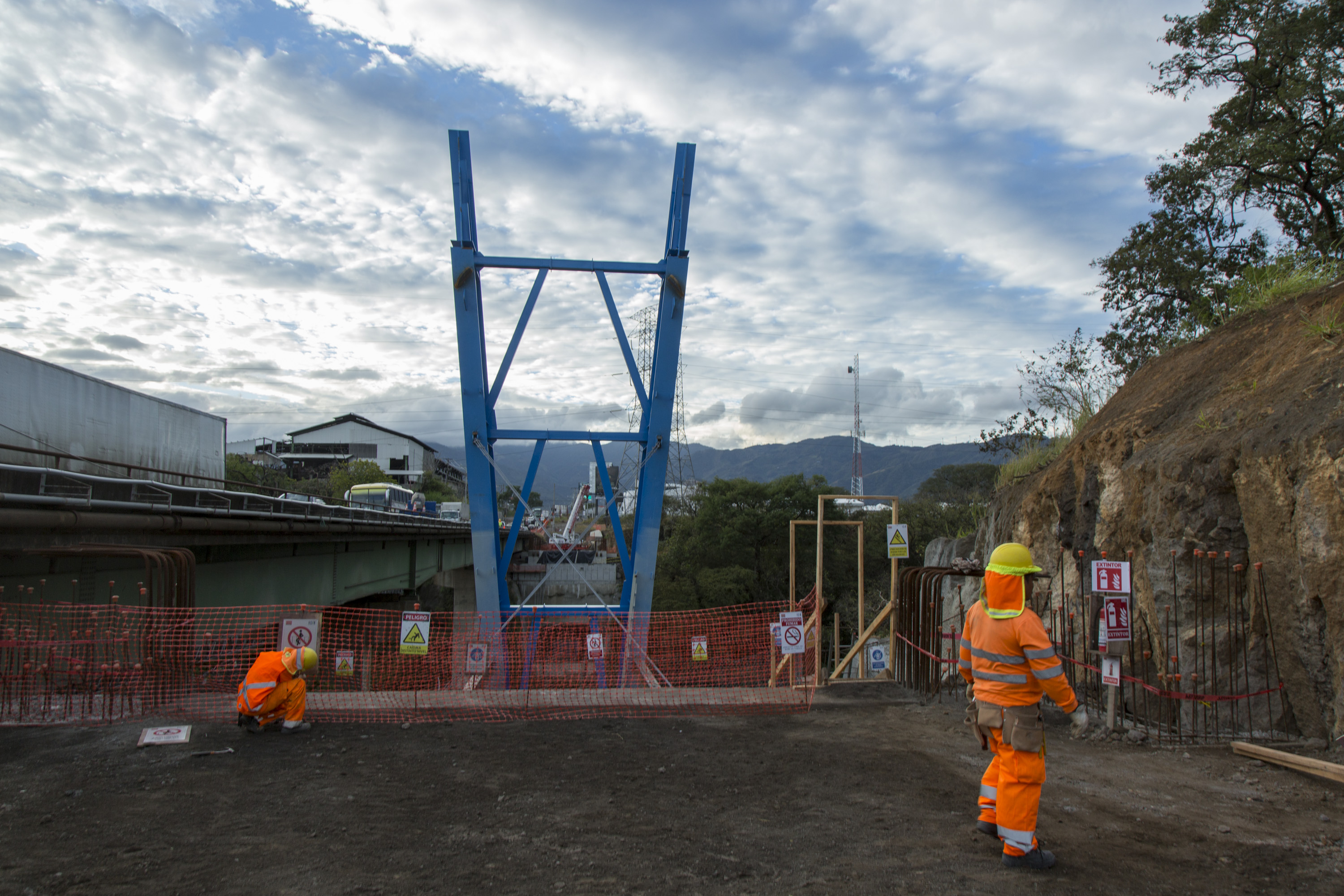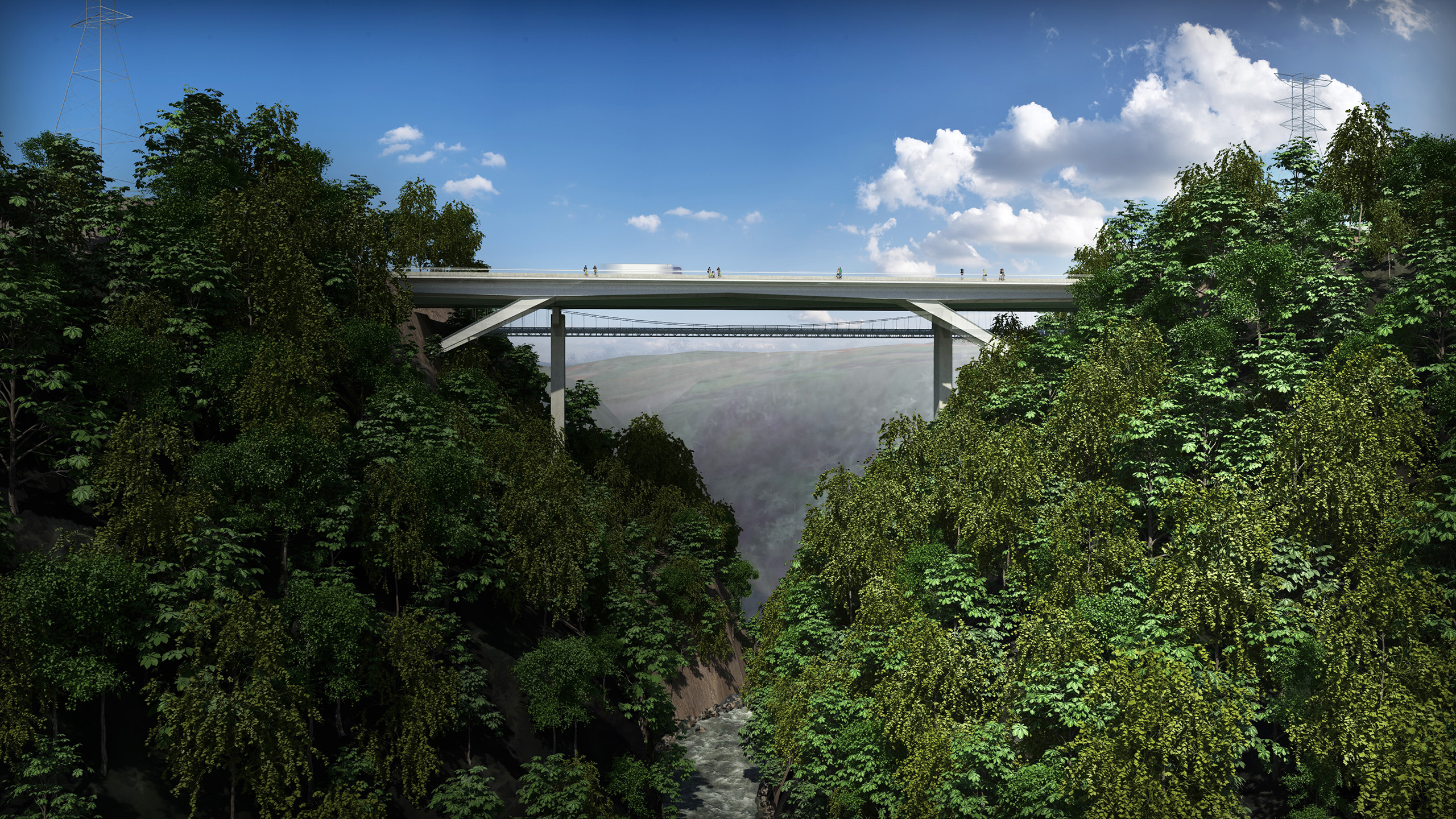
| Bridge over Virilla River in RN147 | |
| San Jose, Costa Rica | |
| Structural typology | Road & Highway Bridges |
| Date | October, 2018 |
| Scope | Detailed design |
| Design | Fhecor |
| Owner | CONAVI |
The new bridge over Virilla river in Costa Rica, inaugurated in August 2018 by the President and the Public Works Minister of Costa Rica, has allowed an increase in capacity of the National Route 147 at its crossing of the Virilla river improving traffic conditions of Radial Lindora.
This frame bridge consists of a concrete-steel composite desk formed by two "I" beams, with a total length of 132 meters, which span a distance of 103 meters over a canyon created by the Virilla river.
The geometry of the bridge has been conditioned by the orography of the canyon and by the construction limitations: high tension line nearby and existing bridge reducing available space. In order to minimize the affection of the bridge to the river, the placement of vertical supports on the deepest part of the canyon was dismissed.
A frame solution with inclined supports was decided based on the good terrain conditions with advantages over the arch solution since, in the first place, the elements to be lifted and rotated have smaller dimensions, which implies reducing the risk of impact with the existing high tension lines. Secondly, in frame solutions, there is a low number of joints to be executed on site, which provides a shorter execution time. Inclined piles are made up of two reinforced "double-T" beams, with an excentric EBF bracing which allows the formation of plastic hinges in the longitudinal direction in case of an extreme earthquake.
This frame bridge consists of a concrete-steel composite desk formed by two "I" beams, with a total length of 132 meters, which span a distance of 103 meters over a canyon created by the Virilla river.
The geometry of the bridge has been conditioned by the orography of the canyon and by the construction limitations: high tension line nearby and existing bridge reducing available space. In order to minimize the affection of the bridge to the river, the placement of vertical supports on the deepest part of the canyon was dismissed.
A frame solution with inclined supports was decided based on the good terrain conditions with advantages over the arch solution since, in the first place, the elements to be lifted and rotated have smaller dimensions, which implies reducing the risk of impact with the existing high tension lines. Secondly, in frame solutions, there is a low number of joints to be executed on site, which provides a shorter execution time. Inclined piles are made up of two reinforced "double-T" beams, with an excentric EBF bracing which allows the formation of plastic hinges in the longitudinal direction in case of an extreme earthquake.









